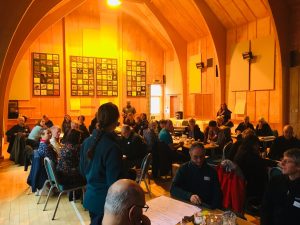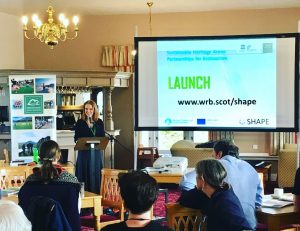In early March Wester Ross Biosphere Reserve officially launched the first-ever destination management plan in Scotland – a culmination of all the work done through the SHAPE project. The plan is a shared statement of intent to manage the area between 2020 -2022, articulating the roles of different stakeholders. Its strength is to address fragmentation. In a small community like Wester Ross visitor economy is not controlled by any one stakeholder group and so it is essential that public, private and voluntary sectors work together.
By: Natasha Hutchison, Coordinator, Wester Ross Biosphere

The SHAPE partners in Wester Ross Biosphere Reserve spent most of the autumn months of 2019 gathering data for reports on Natural & Cultural Heritage, Access & Transport, Visitor Facilities, Built Environment – including the views of visitors and the host communities. It was a lengthy, but necessary process to ensure that there was an accurate recording of the current state of tourism, rather than a collection of anecdotal evidence. These reports will form the baseline to which future monitoring and evaluation can be compared.
Identifying key priorities
Communities and stakeholders gathered in January to discuss the findings, and to identify key priorities for inclusion in the Destination Management Plan. Then came the actual write up the plan, incorporating the baseline reports and the feedback. The document provides an overview of the management of Wester Ross as a tourist destination and is a shared statement of intent to manage the area between 2020 -2022. It articulates the roles of different stakeholders who have control over the visitor experience. The group have identified measurable and achievable actions to take and decided where resources can be allocated to ensure their delivery.

Addressing fragmentation and ensuring support
The strength of this approach is to address fragmentation. Wester Ross’ visitor economy is not controlled by any one stakeholder group and so it is essential that public, private and voluntary sectors work together. Cooperation in this way allows best possible management and prioritisation of resources.
In early March Wester Ross officially launched the plan at a 2-day conference, co-hosted with the local Destination Marketing Organisation Visit Wester Ross. It was an important day in many respects; it was the culmination of all of our work to date. It was the launch of the first-ever destination management plan in Scotland. And it was the first day of Wester Ross being managed as a Sustainable Tourism Destination by a stakeholder partnership.
Happy places to visit must first be happy places to live!
SHAPE is a three-year Northern Periphery and Arctic Programme (NPA) project promoting the development of ecotourism initiatives. Follow us on Facebook or Twitter.



